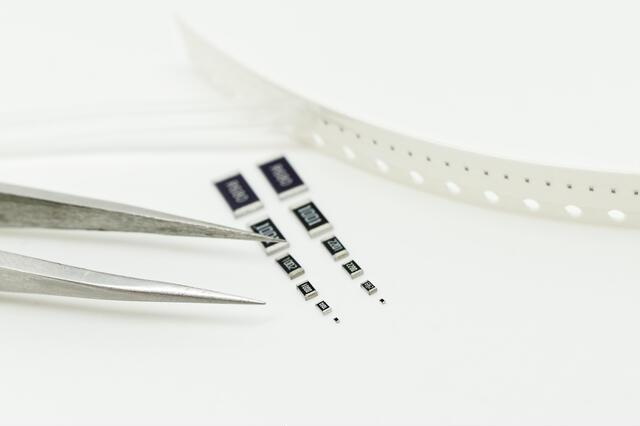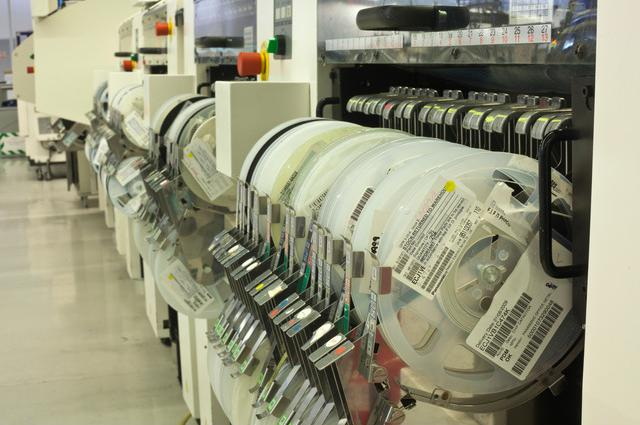Content Menu
● Understanding SMD Components
● The Role of Gluing Machines in SMD Assembly
● Advantages of Using a Gluing Machine
>> 1. Enhanced Mechanical Support
>> 2. Prevention of Component Displacement
>> 3. Improved Reliability Under Stress Conditions
>> 4. Reduction in Manufacturing Defects
>> 5. Increased Production Efficiency
● Challenges and Considerations
>> 1. Adhesive Selection
>> 2. Equipment Costs
>> 3. Process Optimization
● Advanced Features of Modern Gluing Machines
● Case Studies: Real-World Applications
● Future Developments and Trends
● Conclusion
● FAQ
>> 1. What types of adhesives are used in gluing machines for SMD applications?
>> 2. How does a gluing machine improve production efficiency?
>> 3. Can gluing machines prevent component displacement during soldering?
>> 4. What factors should be considered when selecting an adhesive?
>> 5. Are there any drawbacks to using gluing machines?
In the world of electronics manufacturing, the reliability of surface mount devices (SMDs) is paramount. As devices become smaller and more complex, ensuring that components remain securely attached to printed circuit boards (PCBs) during production and throughout their operational life is crucial. One innovative solution that has gained traction in recent years is the use of gluing machines specifically designed for SMD applications. This article explores how a gluing machine can enhance the reliability of SMD components, focusing on its operational mechanisms, advantages, and potential challenges.

Understanding SMD Components
Surface mount devices (SMDs) are electronic components that are mounted directly onto the surface of PCBs. Unlike traditional through-hole components, which require holes drilled into the board, SMDs are soldered onto pads on the PCB's surface. This design allows for a more compact layout and improved electrical performance due to shorter connections.
Reliability in SMDs is essential for several reasons:
- Performance: Reliable connections ensure optimal performance in electronic devices.
- Durability: Components must withstand various environmental factors, including temperature fluctuations and vibrations.
- Cost Efficiency: Reducing failures minimizes warranty claims and maintenance costs.
The Role of Gluing Machines in SMD Assembly
A gluing machine for SMD applications is an automated device that applies adhesive to secure components onto PCBs during the assembly process. These machines can dispense various types of adhesives, including SMT red glue, which is specifically designed for high-temperature applications.
1. Adhesive Dispensing: The machine applies a precise amount of adhesive to designated areas on the PCB before component placement.
2. Component Placement: After adhesive application, a pick-and-place machine positions the SMDs onto the adhesive-coated pads.
3. Curing Process: The adhesive cures either through heat or UV light, solidifying the bond between the component and the PCB.
Advantages of Using a Gluing Machine
1. Enhanced Mechanical Support
Using a gluing machine provides additional mechanical support to SMDs, which is particularly beneficial during soldering processes. The adhesive helps keep components in place, reducing the risk of misalignment or movement that can occur during soldering or thermal cycling.
2. Prevention of Component Displacement
One significant advantage of SMT adhesives is their ability to prevent component displacement during wave soldering or reflow processes. This capability is crucial when dealing with double-sided PCBs where components on one side could fall off when subjected to heat.
3. Improved Reliability Under Stress Conditions
Adhesives can enhance the overall reliability of electronic assemblies by providing resistance against mechanical shocks and vibrations. This added layer of protection ensures that connections remain intact even under challenging conditions.
4. Reduction in Manufacturing Defects
By securing components during assembly, gluing machines help minimize defects related to misalignment or solder bridging—issues that can lead to circuit failures. The precision offered by these machines ensures that adhesives are applied uniformly and accurately.
5. Increased Production Efficiency
Automating the adhesive application process with a gluing machine can significantly speed up production lines. With reduced manual handling and increased accuracy, manufacturers can achieve higher throughput without compromising quality.

Challenges and Considerations
While gluing machines offer numerous benefits, there are challenges associated with their use:
1. Adhesive Selection
Choosing the right adhesive is critical for ensuring compatibility with both components and PCBs. Factors such as curing time, viscosity, and thermal resistance must be considered to avoid issues during production.
2. Equipment Costs
Investing in a high-quality gluing machine may require significant upfront costs. However, this investment can lead to long-term savings through reduced defects and improved product reliability.
3. Process Optimization
To maximize the benefits of using a gluing machine, manufacturers must optimize their processes carefully. This includes calibrating machines for precise dispensing and ensuring proper curing conditions are met.
Advanced Features of Modern Gluing Machines
Modern gluing machines for SMD applications often come equipped with advanced features designed to enhance their functionality and efficiency:
- Precision Dispensing Systems: These systems allow for highly accurate application of adhesives, minimizing waste and ensuring consistent bonding quality.
- Automated Inspection: Some machines include built-in inspection systems to verify adhesive application accuracy and detect any defects early in the production process.
- Integration with Production Lines: Gluing machines can be integrated seamlessly into existing production lines, allowing for streamlined workflows and reduced downtime.
Case Studies: Real-World Applications
Several companies have successfully integrated gluing machines into their SMD assembly processes, achieving significant improvements in product reliability and manufacturing efficiency:
- Automotive Electronics: In the automotive sector, where reliability under harsh conditions is critical, gluing machines have been used to enhance the durability of electronic components in vehicles.
- Aerospace Industry: The aerospace industry, known for its stringent reliability standards, has also adopted gluing machines to ensure that electronic components withstand extreme environmental conditions.
Future Developments and Trends
As technology continues to evolve, we can expect further advancements in gluing machines for SMD applications:
- Increased Automation: Future machines will likely incorporate more advanced automation features, such as AI-driven process optimization and real-time quality control.
- Sustainable Materials: There will be a growing focus on using environmentally friendly adhesives and reducing waste in the production process.
Conclusion
In conclusion, incorporating a gluing machine into the SMD assembly process can significantly enhance the reliability of electronic components. By providing mechanical support, preventing displacement during critical manufacturing stages, and improving overall production efficiency, these machines represent a valuable asset in modern electronics manufacturing.
As technology continues to evolve and demand for smaller, more reliable electronic devices increases, gluing machines will play an increasingly important role in ensuring that SMD components remain securely attached throughout their lifecycle.

FAQ
1. What types of adhesives are used in gluing machines for SMD applications?
Gluing machines typically use SMT red glue or other specialized adhesives designed for high-temperature environments and strong bonding capabilities.
2. How does a gluing machine improve production efficiency?
By automating the adhesive application process, gluing machines reduce manual handling time and increase accuracy, leading to faster production cycles.
3. Can gluing machines prevent component displacement during soldering?
Yes, gluing machines secure components in place during wave soldering or reflow processes, minimizing risks associated with component movement.
4. What factors should be considered when selecting an adhesive?
Key factors include curing time, viscosity, thermal resistance, and compatibility with both components and PCBs.
5. Are there any drawbacks to using gluing machines?
Potential drawbacks include high initial costs and the need for careful process optimization to ensure effective adhesive application.




















